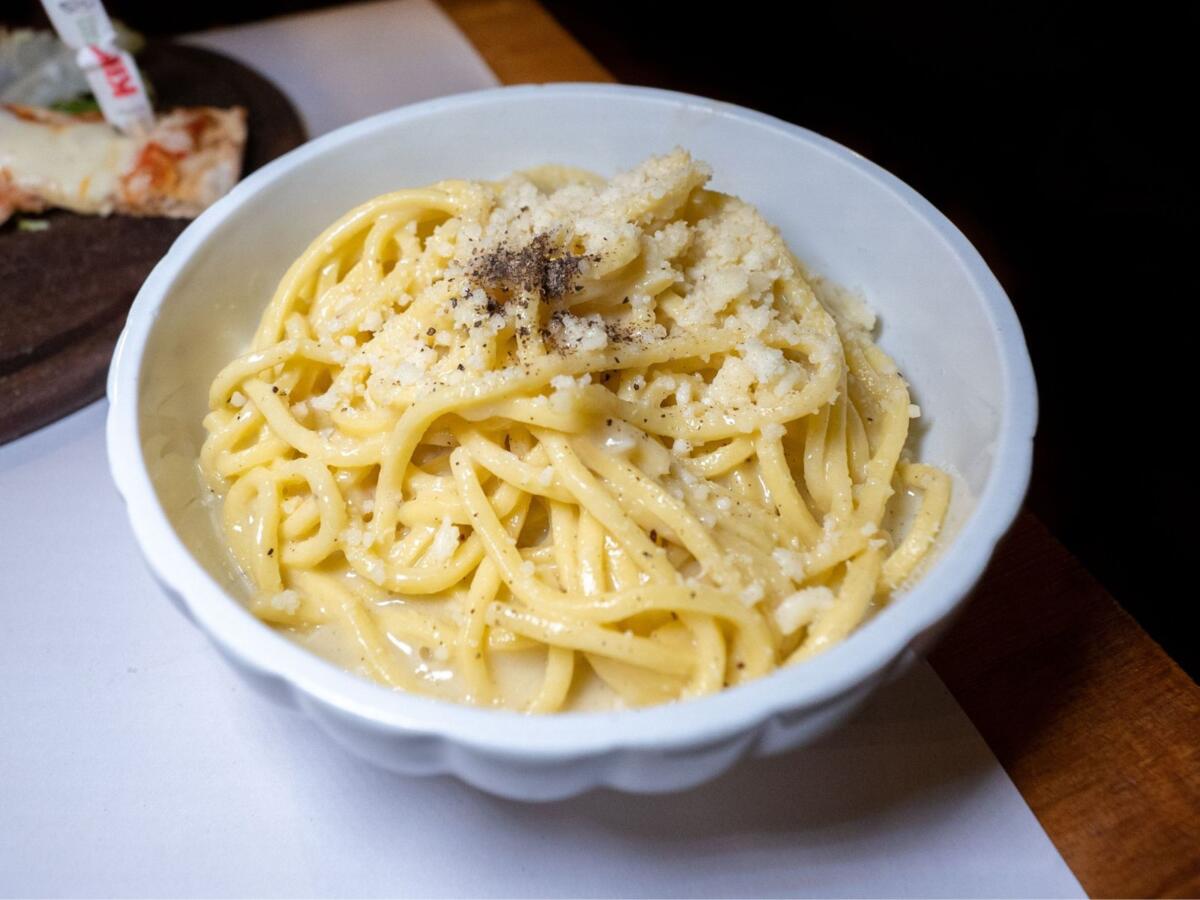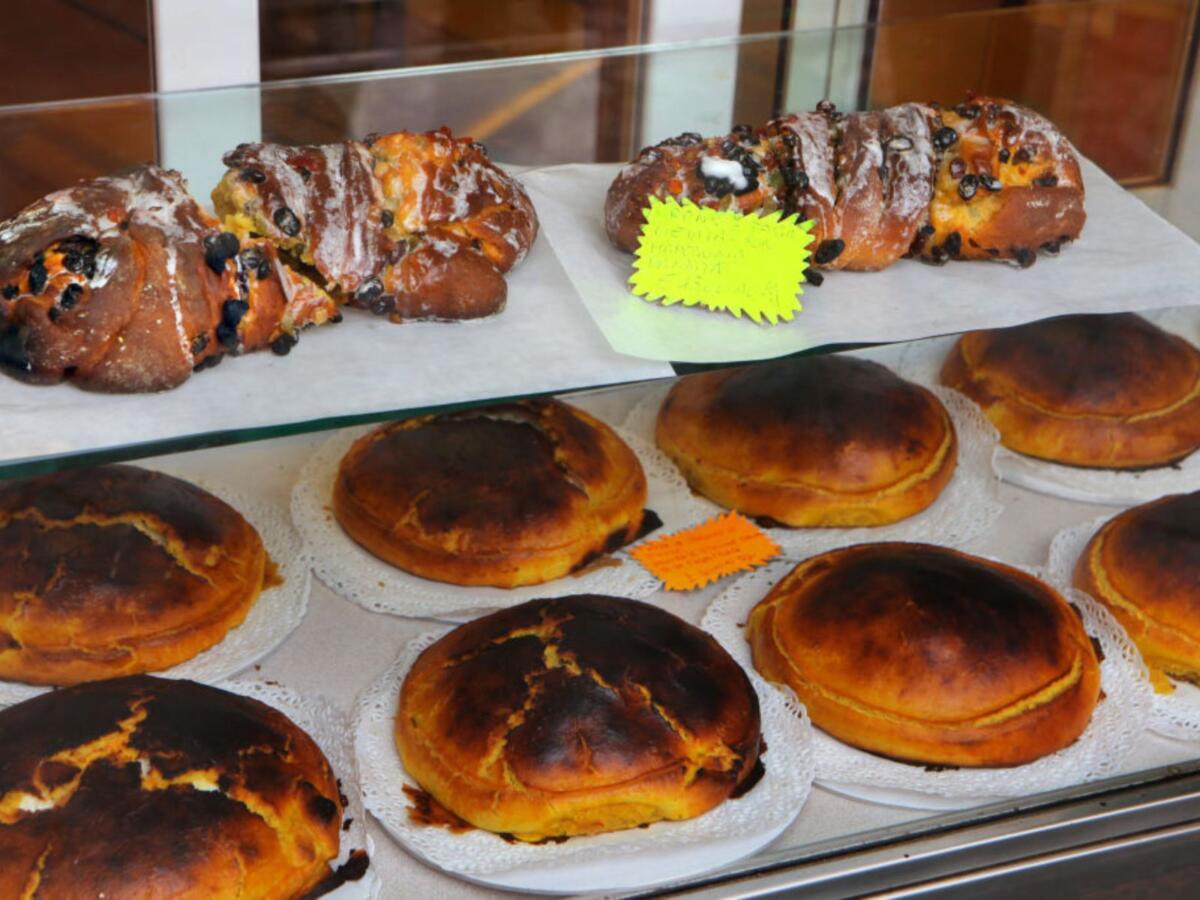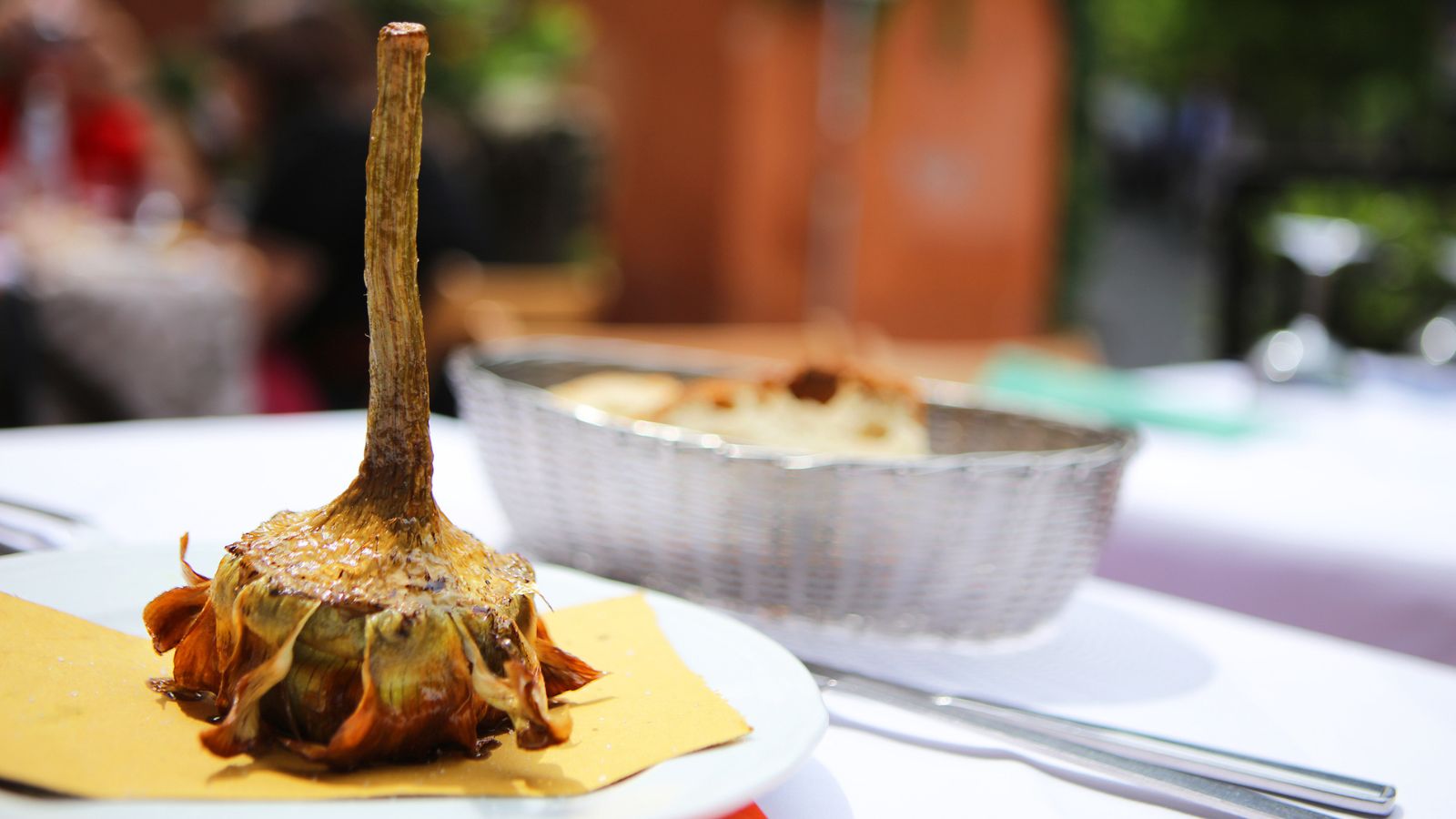Rome’s Jewish Ghetto — now one of the city’s most sought-after neighborhoods to live in — has a truly heartbreaking history.
A papal edict (“bull”) established in 1555 by Pope Paul IV forced all of Rome’s Jews to move into a flood-prone, cramped and filthy 7 acres next to the Tiber River. They lived like this for almost 300 years, only allowed out during the day, and locked in by gates at night. As the population grew, the existing buildings were built-up vertically, blocking out much of the natural light and leading to even worse hygienic conditions and the spread of disease.
The combination of kosher dietary laws, crushing poverty, and papal restrictions that were in place for the centuries of isolation the residents endured resulted in a unique, but delicious, cuisine. A cuisine built on simple, inexpensive ingredients, where nothing goes to waste. Fried foods feature prominently; some attribute this to the residents’ extreme poverty, frying food made it more flavorful. Others say that deep-frying food of often questionable quality and freshness ensured that any bacteria was killed off. Fiori di zucca (fried zucchini flowers), a creative use of often-neglected zucchini flowers, are the perfect example.
In 1870, the secular government of Rome replaced the Vatican’s religious rule, and the Ghetto was destroyed. Today, the neighborhood is a hidden gem that still showcases Rome’s distinctive Jewish cuisine. Here are five of the best spots to enjoy it.
The Nosher celebrates the traditions and recipes that have brought Jews together for centuries. Donate today to keep The Nosher's stories and recipes accessible to all.
Piperno
Dating back to 1860, Piperno is one of the oldest restaurants in Rome. It is a tucked-away jewel with bow-tied waiters and a classic ambiance. It’s one of the best places to experience carciofi alla giudia (Jewish-style artichokes). While artichokes are beloved throughout Rome and served in countless different ways, you’ll want to have carciofi alla giudia at least once. The artichokes are fried in hot oil until perfectly crispy, without a trace of greasiness. Piperno does it right.
Via Monte dè Cenci, 9, 00186 Roma RM
https://www.ristorantepiperno.it/prenotazioni/
Soro Margherita

It simply does not get more authentic than Soro Margherita. Think: small, nondescript interior and some of the best food you’ll ever eat. This family-run institution is for those who want the opposite of a trendy, “hot” dining experience, but instead crave food that tastes like it was cooked in a nonna’s kitchen. Specialties include carciofi alla giudia (of course), but don’t skip the out-of-this-world polpette (meatballs) and a stellar cacio e pepe.
Piazza delle Cinque Scole, 30, 00186 Roma RM
https://www.soramargherita.com
Al Pompiere
In most major cities, tablecloths and formal waitstaff attire are typically reserved for “fancy” or very expensive establishments. But old school, established restaurants like Al Pompiere prove that even the simplest of dishes merit proper serving in a beautiful setting. This restaurant is refined and elegant with a forever menu that will hopefully never change. All the standards of Roman Jewish cooking can be found here, but if you need a break from fried food, be sure to try their taglione al limone, a creamy pasta dish brightened up with lots of lemon.
Via di S. Maria de’ Calderari, 38, 00186 Roma RM
https://www.alpompiereroma.com
Nonna Betta
A relative newcomer to the Ghetto’s restaurant scene, Nonna Betta, which opened in 2015, offers authentic Roman Jewish cuisine served up by the grandson of the restaurant’s namesake (so there’s a real Nonna Betta). In keeping with kosher dietary laws, which forbid mixing meat and dairy, there are two separate menus: one for fish and dairy, and the other for meat. Here, you’ll find traditional specialties like carciofi alla giudia, battered cod fillets and fried zucchini flowers, along with ever-changing seasonal offerings.
Via del Portico d’Ottavia, 16, 00186 Roma RM
Forno Boccione

It is easy to walk right past Forno Boccione, an unmarked, 200-year-old bakery — but keep your eyes peeled for a long queue, this one’s a must-visit! They’re best known for their crostata, a rustic Italian pie, which has a distinctive blackened top and an interesting history. A 16th century papal decree forbade Roman Jews from selling or even trading dairy products, so the clever bakers mixed ricotta cheese with cherries to mask it, and topped their crostata with a blackened crust, to hide the cheese completely.
They’re also famous for their pizza ebraica (“Hebrew pizza”), which is not a pizza as we know it at all, but a hard cookie filled with fruit and nuts. I loved their amaretti, a deeply almond-flavored macaroon that is perfectly sized for eating while strolling.
Via del Portico d’Ottavia, 1, 00186 Roma RM
For more on Roman Jewish cuisine, pre-order Leah Koenig’s book “Portico: Cooking and Feasting in Rome’s Jewish Kitchen,” out August 2023.



